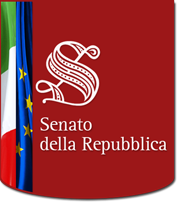Aree tematiche

Fra il 1990 e il 2016 lo stock globale degli investimenti diretti esteri è passato da 2.254 a 26.160 miliardi di dollari. Molti governi hanno adottato meccanismi di controllo sull'acquisizione delle imprese strategiche e sugli approvvigionamenti di materie prime e prodotti industriali critici. Anche l'Unione europea ha incoraggiato gli Stati membri a rafforzare il loro quadro normativo: già 25 su 27 lo stanno facendo. E l'Italia?

Between 1990 and 2016, the stock of foreign direct investment globally increased from USD 2,254 billion to USD 26,160 billion. Many governments have adopted mechanisms to control the acquisition of strategic companies and the procurement of critical raw materials and industrial products. Also, the European Union has encouraged member States to strengthen their regulatory framework: already 25 out of 27 are doing so. What about Italy?
L'ERP è la politica-pilastro dell'Ue per fondi stanziati (351 miliardi tra 2014 e 2020) e obiettivi perseguiti (redistribuire la ricchezza tra regioni e paesi). I suoi effetti nello stimolare la crescita delle aree in ritardo di sviluppo sono però parecchio controversi. Anche a causa del (poco noto) effetto-vicinato: perchè essere circondati da regioni povere incide sull'efficacia degli interventi? Il caso del Sud Europa (compreso il nostro Mezzogiorno).

ERP is the policy-pillar of the European Union, both in terms of funds allocated (351 billion between 2014 and 2020) and objectives pursued (redistribution of wealth between regions and countries). Its effects in stimulating growth in lagging areas are, however, quite controversial. Not least because of the (little known) neighbourhood effect: why does being surrounded by poor regions affect the effectiveness of interventions? The case of Southern Europe (including Italian Mezzogiorno).
Ben 13,5 milioni di italiani, oltre il 20% della popolazione, vivono a più di 20 minuti dai servizi essenziali come scuole secondarie, ospedali e stazioni ferroviarie. Entro il 2027 la SNAI punta a raggiungerne 4,5 milioni, rivitalizzando 1.094 comuni situati in territori gravati da debolezza economica, bassi livelli di reddito e ricchezza, forte spopolamento, emigrazione giovanile e invecchiamento degli abitanti. Ma come ha funzionato nelle 19 aree pilota in cui è stata applicata finora?

Con 352 miliardi di euro da distribuire nel settennio 2014-2020 per stimolare la crescita, di cui 46,5 all'Italia, la politica di coesione è il vero pilastro dell'azione europea. Ma decenni di interventi non sono bastati a cancellare le disparità economiche e sociali all'interno dell'Unione. E l'Italia si ritrova oggi con un primato non invidiabile: ha il valore più basso di sviluppo sociale nell'UE-15 e il suo Mezzogiorno è la più grande area depressa del continente. Che cosa non ha funzionato?

€352bn earmarked for the 2014-2020 period in order to stimulate growth make cohesion policy the veritable pillar of European integration. However, decades of growth policies were not able to smooth out economic and social imbalances: Italy now unenviably tops the EU-15 chart of countries with the lowest social development index and Southern Italy is the largest depressed region in Europe. What went wrong?
La difficoltà di accesso al credito per le piccole e medie imprese è un problema noto. E infatti molti paesi si sono dotati di fondi di garanzia per le PMI, offrendo garanzie (totali o parziali) in affiancamento o in sostituzione. La variabilità delle quote genera però una grande eterogeneità di trattamento e di risultati.

For Italy, an inverse-U shaped relationship is found with the maximum of the effectiveness around 70% and no effects below and above 50% and 80%, respectively. This approach is quite informative as allows the policy makers to tailor the policy according to the specific value of the ratio.





